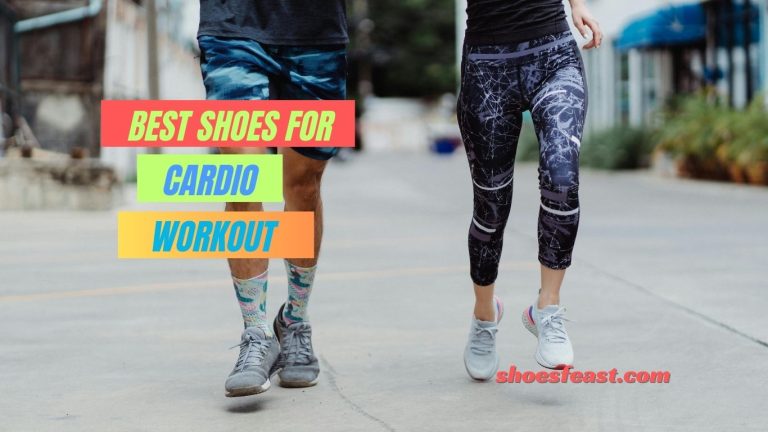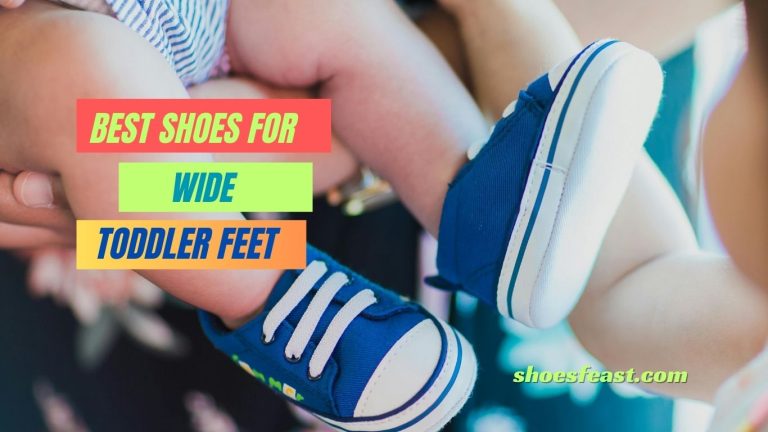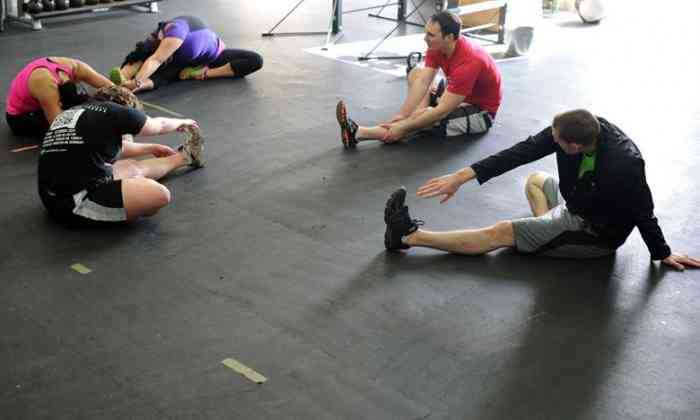10 Best Shoes for Foot Pain Relief
Choosing the right shoes is pivotal, especially when dealing with foot pain, which can impair your mobility and quality of life. Foot pain can stem from various sources, such as plantar fasciitis, arthritis, or simply wearing poorly fitted shoes. The right footwear does more than just cushion your steps; it can significantly alter your body’s mechanics, reducing stress on your feet, ankles, and even your back.
Investing in proper shoes is essential not only for alleviating pain but also for preventing further injuries. This article will guide you through selecting shoes that offer the best relief for foot pain, ensuring that every step you take contributes to your overall health and comfort.
Top 10 Shoe Reviews for Foot Pain Relief
Table of Contents
Toggle1. Orthofeet Proven Heel and Foot Pain Relief Sneakers
Orthofeet’s sneakers are specifically designed for those suffering from foot and heel pain, offering an exceptional level of comfort and support. The shoe features an ergonomic sole with a mild rocker design, which helps reduce stress on the joints and enhances stability.
The premium orthotic insoles with anatomical arch support correct the alignment of the foot, which in turn alleviates pain. The soft, non-binding upper adapts to the shape of the foot, preventing pressure points.
Pros:
- Anatomical orthotic insoles enhance comfort.
- Soft, non-binding upper reduces pressure points.
- Ergonomic sole design for improved stability.
- Excellent for diabetics and those with arthritis.
- Available in various widths for a perfect fit.
Cons:
- Higher price point than some competitors.
- Limited style and color options.
- May require a break-in period for maximum comfort.
2. Brooks Ghost 14 Running Shoe
Ideal for both running and everyday wear, the Brooks Ghost 14 provides a smooth and balanced ride thanks to its BioMoGo DNA and DNA Loft cushioning. This shoe is perfect for those who experience foot pain, as it offers soft cushioning while ensuring a secure fit with its 3D Fit Print upper technology.
The segmented crash pad is an integrated system of shock absorbers, which makes every step feel soft and smooth, irrespective of how the foot lands.
Pros:
- Exceptionally smooth and balanced cushioning.
- Segmented crash pad for soft landings.
- 3D Fit Print upper ensures a secure fit.
- Suitable for runners and casual wear.
- Available in multiple widths.
Cons:
- May not provide enough support for severe overpronators.
- Slightly heavier than some competitive running shoes.
- Limited color options in extra-wide sizes.
3. Asics Gel-Kayano 28
The Asics Gel-Kayano 28 is renowned for its stability and comfort, making it a top choice for foot pain sufferers. Featuring GEL™ technology cushioning in the forefoot and rearfoot, it significantly reduces impact and increases shock absorption.
The DYNAMIC DUOMAX™ support system enhances stability and support, while the mesh upper offers breathable, flexible fit that adapts to the runner’s foot.
Pros:
- Advanced GEL™ technology for superior shock absorption.
- DYNAMIC DUOMAX™ system enhances stability.
- Breathable mesh upper.
- Excellent for long-distance runners.
- Stylish design and color options.
Cons:
- Expensive compared to some alternatives.
- Can feel stiff to some users initially.
- Heavier build may not appeal to all runners.
4. New Balance 990v5
The New Balance 990v5 combines a classic look with modern technology, making it an excellent choice for those with foot pain. It features ENCAP midsole technology which provides support and maximum durability.
The dual-density collar foam prevents irritation around the ankles, and its blown rubber outsole delivers superior rebound, ideal for everyday wear and long walks.
Pros:
- ENCAP midsole technology for durability and support.
- Dual-density collar foam reduces ankle irritation.
- Classic design with modern features.
- High-quality construction.
- Wide range of sizes and widths available.
Cons:
- On the pricier side.
- The design may feel too bulky for some.
- Limited breathability compared to mesh models.
5. Clarks Unstructured Un.Loop Slip-On Shoe
Perfect for casual wear, Clarks Unstructured Un.Loop offers unmatched comfort and easy slip-on functionality. This shoe features a unique air circulation system and lambskin linings, which keep feet cool and dry.
The Ortholite footbed provides extra cushioning and moisture management, ideal for those suffering from foot pain. Its unstructured rubber sole delivers solid traction while ensuring flexibility.
Pros:
- Unique air circulation system keeps feet cool.
- Ortholite footbed for superior cushioning and moisture management.
- Easy slip-on design.
- High-quality leather for durability.
- Versatile styling for casual wear.
Cons:
- Not suitable for formal occasions.
- Limited arch support compared to specialized orthopedic shoes.
- Higher cost than some casual shoes.
6. Saucony Triumph 18
Saucony Triumph 18 excels in delivering comfort and support for those with foot pain. It features PWRRUN+ cushioning, providing a plush feel without compromising responsiveness.
The FORMFIT system cradles the foot, adapting to its shape and motion for a custom fit, while the engineered mesh upper enhances breathability and comfort during extended wear.
Pros:
- PWRRUN+ cushioning offers a plush, responsive ride.
- FORMFIT system provides a personalized fit.
- Breathable engineered mesh upper.
- Durable rubber outsole for long-lasting wear.
- Reflective elements for safety in low-light conditions.
Cons:
- May be too cushioned for those preferring a firmer feel.
- Slightly heavier compared to some competitors.
- Price point may be high for budget-conscious buyers.
7. Hoka One One Bondi 7
Hoka One One Bondi 7 is renowned for its exceptional cushioning, making it a favorite among those with foot pain. This model features a full EVA midsole, breathable mesh upper, and a beveled heel design, all of which combine to offer a smooth, balanced ride.
The Meta-Rocker technology helps natural walking gait and reduces pressure on the foot.
Pros:
- Maximum cushioning with full EVA midsole.
- Meta-Rocker technology aids in natural foot movement.
- Wide base offers inherent stability.
- Highly breathable mesh upper.
- Various color options to suit personal style.
Cons:
- Some may find the design too bulky.
- Higher price range.
- Limited feedback on long-term durability.
8. Nike Air Zoom Pegasus 38
The Nike Air Zoom Pegasus 38 continues to be a staple for runners and those who need a reliable shoe to alleviate foot pain. It features a full-length Zoom Air unit and React foam for cushioning and responsiveness.
The wider forefoot provides a more comfortable fit, while the mesh upper and midfoot webbing ensure your foot is secure at all times.
Pros:
- Full-length Zoom Air unit and React foam for responsive cushioning.
- Wider forefoot area enhances comfort.
- Secure fit with mesh upper and midfoot webbing.
- Diverse range of colorways.
- Good value for a high-performance shoe.
Cons:
- Not as durable as some other models on rugged terrains.
- React foam may feel too soft for some preferences.
- Some runners might prefer a higher drop.
9. Merrell Moab 2 Ventilator
Ideal for those who need foot pain relief while engaging in outdoor activities, the Merrell Moab 2 Ventilator excels in comfort and durability.
It features a suede leather and mesh upper for durability and breathability, a Vibram sole for traction, and a supportive footbed with arch and heel support that’s essential for reducing foot pain.
Pros:
- Suede leather and mesh upper for durability and breathability.
- Vibram sole offers excellent traction.
- Supportive footbed with sufficient arch and heel support.
- Protective toe cap and heel counter.
- Ideal for hiking and other outdoor activities.
Cons:
- Not waterproof, which might limit usability in wet conditions.
- Some users may find the shoe heavy.
- Break-in period required for optimal comfort.
10. Adidas UltraBoost 21
Adidas UltraBoost 21 is a high-performance running shoe that also provides great relief for foot pain sufferers due to its responsive Boost midsole and flexible Primeknit upper.
It offers enhanced stability through the Linear Energy Push system, which increases responsiveness and support during runs, making it ideal for those with foot discomfort.
Pros:
- Responsive Boost midsole cushions every step.
- Flexible, breathable Primeknit upper.
- Linear Energy Push system enhances stability.
- Stylish design suitable for casual wear as well.
- Good for both running and day-to-day activities.
Cons:
- On the expensive side.
- Some may find the shoe too snug.
- Heavier than previous UltraBoost models.
Buyer’s Guide
When suffering from foot pain, the selection of footwear should be approached with care and precision. Here are some key factors to consider when shopping for shoes that can help alleviate and prevent foot pain:
1. Arch Support: The right level of arch support is crucial. Shoes with good arch support help distribute pressure evenly across your feet, reducing stress on the plantar fascia. This is particularly important for individuals with flat feet or high arches.
2. Cushioning: Proper cushioning in the sole absorbs the impact as your foot strikes the ground. Look for shoes with a soft, yet firm midsole that provides adequate cushioning without being too spongy, which could actually lead to more instability and discomfort.
3. Fit and Size: Wearing shoes that fit properly is essential. Shoes that are too tight can exacerbate foot pain, leading to issues like bunions and hammertoes, while too loose shoes can cause friction and blisters. Always try on shoes later in the day when your feet are most swollen to find the best fit.
4. Material and Breathability: The material of the shoe should offer both durability and breathability. Leather or high-quality synthetic materials that allow air circulation can prevent moisture build-up, which reduces the risk of blisters and other skin irritations.
5. Heel Support and Padding: Shoes with structured heel support and extra padding can help manage heel pain, a common symptom in those suffering from plantar fasciitis. A slightly elevated heel reduces tension in the Achilles tendon, offering relief during movement.
6. Flexibility: The shoe should allow for natural foot movement. Too rigid a shoe can increase foot pain, while a flexible forefoot section aids in proper foot roll-through from heel to toe, which is essential for pain-free walking or running.
7. Sole Design: Look for shoes with a sole that provides good grip and traction to avoid slips and falls, which can exacerbate foot pain. A non-slip sole is particularly important in preventing accidents on wet or uneven surfaces.
FAQ
Q1: What type of shoe is best for reducing foot pain?
Footwear with ample arch support, superior cushioning, and flexibility tends to be best for reducing foot pain. Orthopedic or therapeutic shoes specifically designed to address foot health issues can also be an excellent choice.
Q2: Can the wrong shoes cause foot pain?
Absolutely. Shoes that lack support or don’t fit properly can lead to a myriad of foot problems, including plantar fasciitis, bunions, and corns, all of which can cause or exacerbate foot pain.
Q3: How often should I replace my shoes to avoid foot pain?
Generally, replace your shoes every 300 to 500 miles of walking or running, or at least once a year if you wear them regularly. Over time, shoes lose cushioning and support, which can lead to increased foot pain.
Q4: Are expensive shoes always better for foot pain?
Not necessarily. While high-quality materials and construction are important, the most expensive shoes are not always the best option. It’s more important to choose shoes that fit well and offer the specific support and cushioning your feet need.
Q5: Can inserts or orthotics help with foot pain?
Yes, custom orthotics or over-the-counter inserts can greatly enhance the comfort of your shoes and provide the additional support that your feet may require. They can be particularly helpful for those with specific conditions like flat feet or high arches.
Q6: What features should I look for in running shoes for foot pain?
Look for running shoes with exceptional shock absorption, good arch support, and a cushioned sole. Additionally, consider features like a wide toe box and a stable heel counter for added comfort and support.
Q7: How can I test if a shoe has good arch support?
You can test the arch support by pressing down on the insole. It should not collapse under pressure and should provide a comfortable, firm arch that matches the contours of your foot. Also, wearing the shoes on a trial walk around the store can help you feel if the arch support is adequate for your needs.
Conclusion
Selecting the right footwear is critical for alleviating foot pain, ensuring both safety and functionality. The right shoes can dramatically improve your comfort levels, allowing for greater mobility and a better quality of life. Whether for daily wear, sports, or special conditions, choosing shoes with proper support, cushioning, and fit is essential to managing foot pain effectively.





